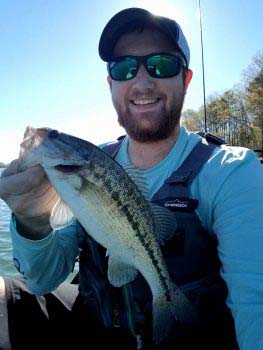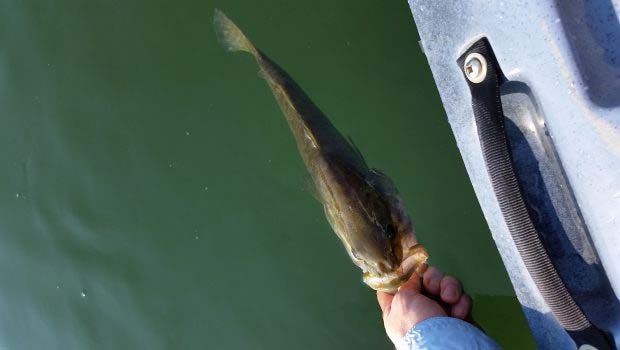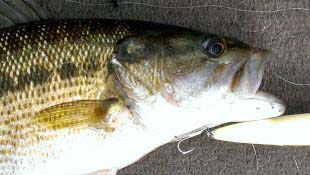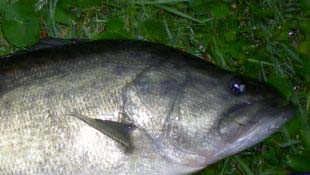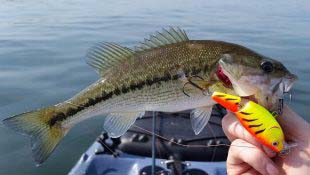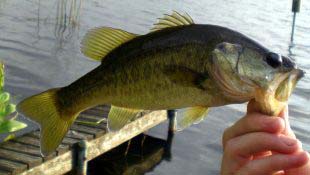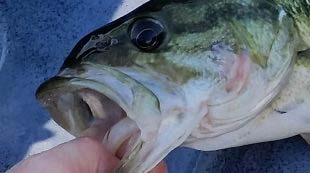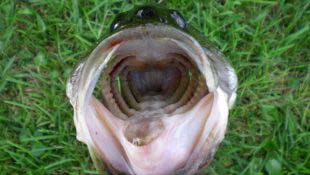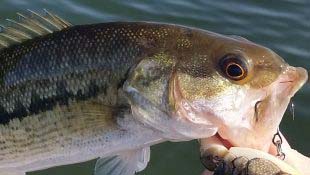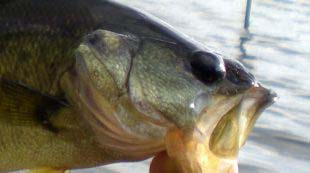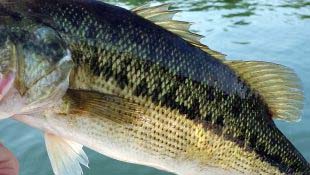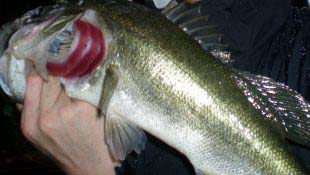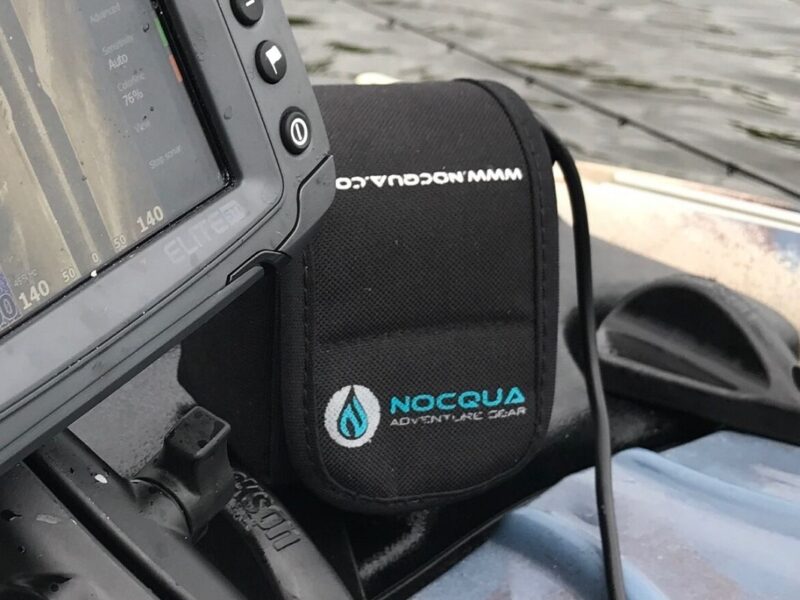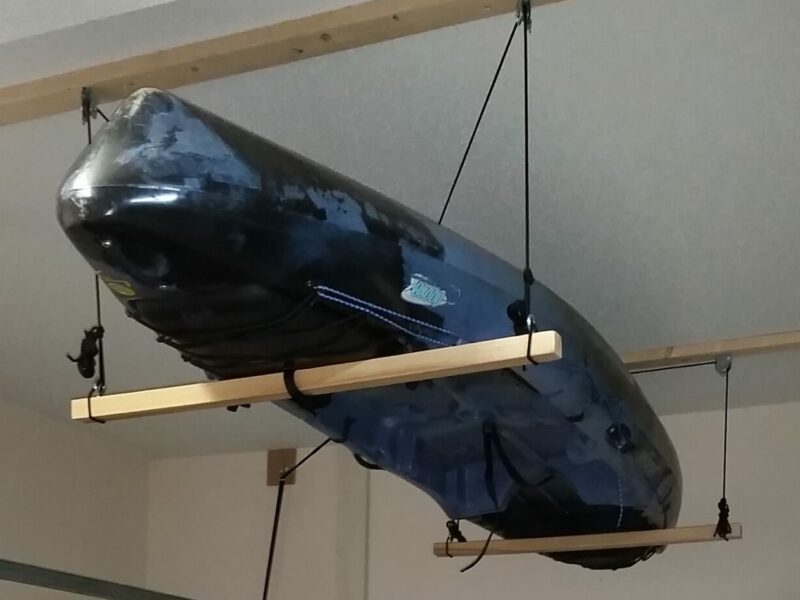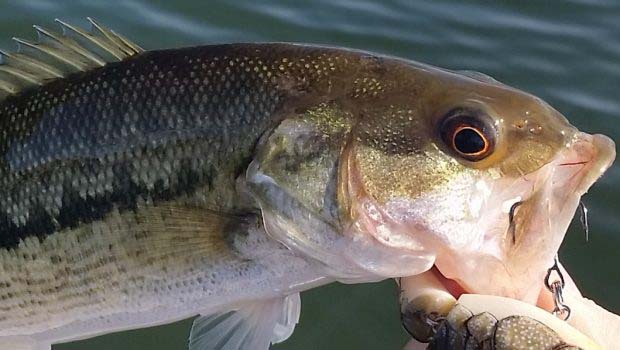
Differences Between Largemouth Bass and Spotted Bass
There are several key differences between largemouth bass and spotted bass. At a high level they are jaw length, stomach markers, cheek scale size, dorsal fin attachment, tongue patch, and behavior. Also largemouth bass usually grow larger than spotted bass.
It can be very difficult to tell which one you have caught unless you know what to look for. You can’t identify the fish based on coloration, stripes, or spots because they can change drastically depending on the water they inhabit. We will break it down for you into a few easily identifiable features and the basic behaviors of each fish so you will know what you have caught next time you’re out fishing – then you can test your knowledge with the quiz!
Jaw Length
The jaw when closed does not extend past the rear of the eye on a spotted bass. It does extend past the eye on a largemouth.
Dorsal Fin
The spotted bass has a top dorsal fin that is clearly connected while the largemouth bass has a separate or almost separate dorsal fin.
Tongue
The spotted bass has a small rectangular rough patch in the center of the tongue. Largemouth bass have almost an entirely smooth tongue. It is hard to tell in the pictures so be sure not to confuse pigmentation with texture.
Cheek Scales
The cheek scales on a spotted bass are much smaller than the rest of the scales on their body. The cheek scales on a largemouth bass are the same size as the rest of their scales.
Stomach Markers
Spotted bass have lines of spots along the stomach. Largemouth bass do not have these and generally just have a plain white stomach.
Behavior and Characteristics
- Largemouth bass in general get bigger than spotted bass.
- Largemouth bass tend to jump and rush to the top when hooked while spotted bass will dive deep and behave more like a smallmouth on the line.
- Spotted bass tend to school more than largemouth bass.
- Spotted bass primarily relate to structure while largemouth bass primarily relate to cover.
- Spotted bass generally have better coloration, but there are exceptions.
Location
Both Spotted Bass and Largemouth Bass can be found in central and eastern United States. In fact, spotted bass are also sometimes called Kentucky Bass. These fish are both very exciting game fish for anglers and they live in the same areas so it can be a thrill to target and catch both!
Practice Responsible Catch and Release
- Don’t play the fish to exhaustion, ensure you’re using the proper weight tackle.
- If the fish is gut hooked, cut the line as close to the hook as possible and leave it in the fish.
- Handle a fish as little as possible using only wet hands or quality fish gloves to protect the mucous layer.
- Use a soft rubber landing net to protect the fish when bringing it into your boat or kayak. Rubber is the best choice here as knotted mesh nets can damage the eyes, fins, gills, and scales of the fish.
- Utilize a hook remover tool for a quick and gentle release. This makes it so much easier to quickly release a fish and prevents it from flopping a hook into your hand.
- If you’re weighing the fish, use a lip gripper with an integrated scale rather than hooking the fish in the gills as it is better for the fish and you can have it back in the water more quickly.
Spotted Bass vs Largemouth Bass Quiz
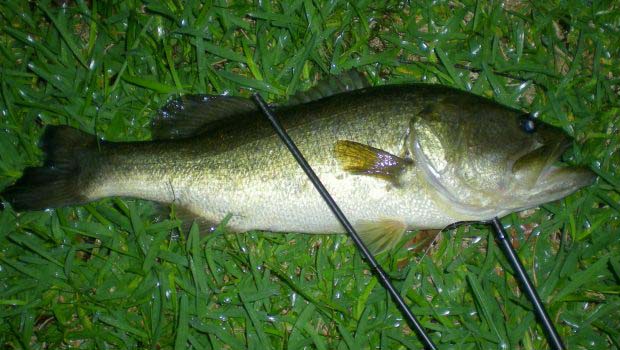
This is a largemouth bass because the corner of the jaw extends past the eye. The top dorsal fins are also separate and there are no dots or lines on the stomach.

This one is a spotted bass. Almost all of the characteristics are visible in this picture - combined dorsal fin, jaw ending before eye, small scales on the cheek, spotted stripes on the stomach, and significant spotted pigments.
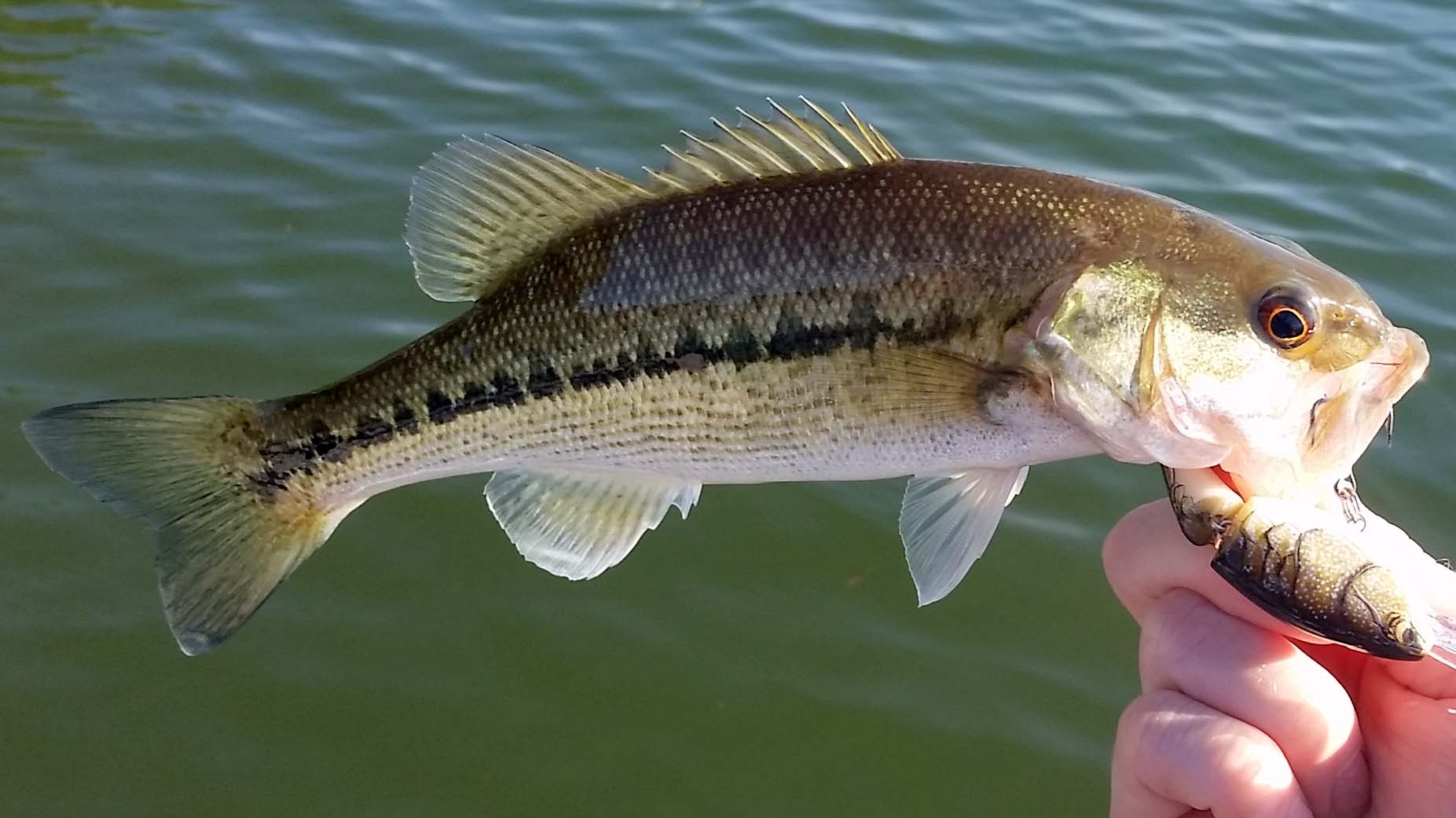
This is a textbook example of a spotted bass! You can see the dorsal fins are connected and there are spotted lines on the stomach. Also check out that red ring around the eye!
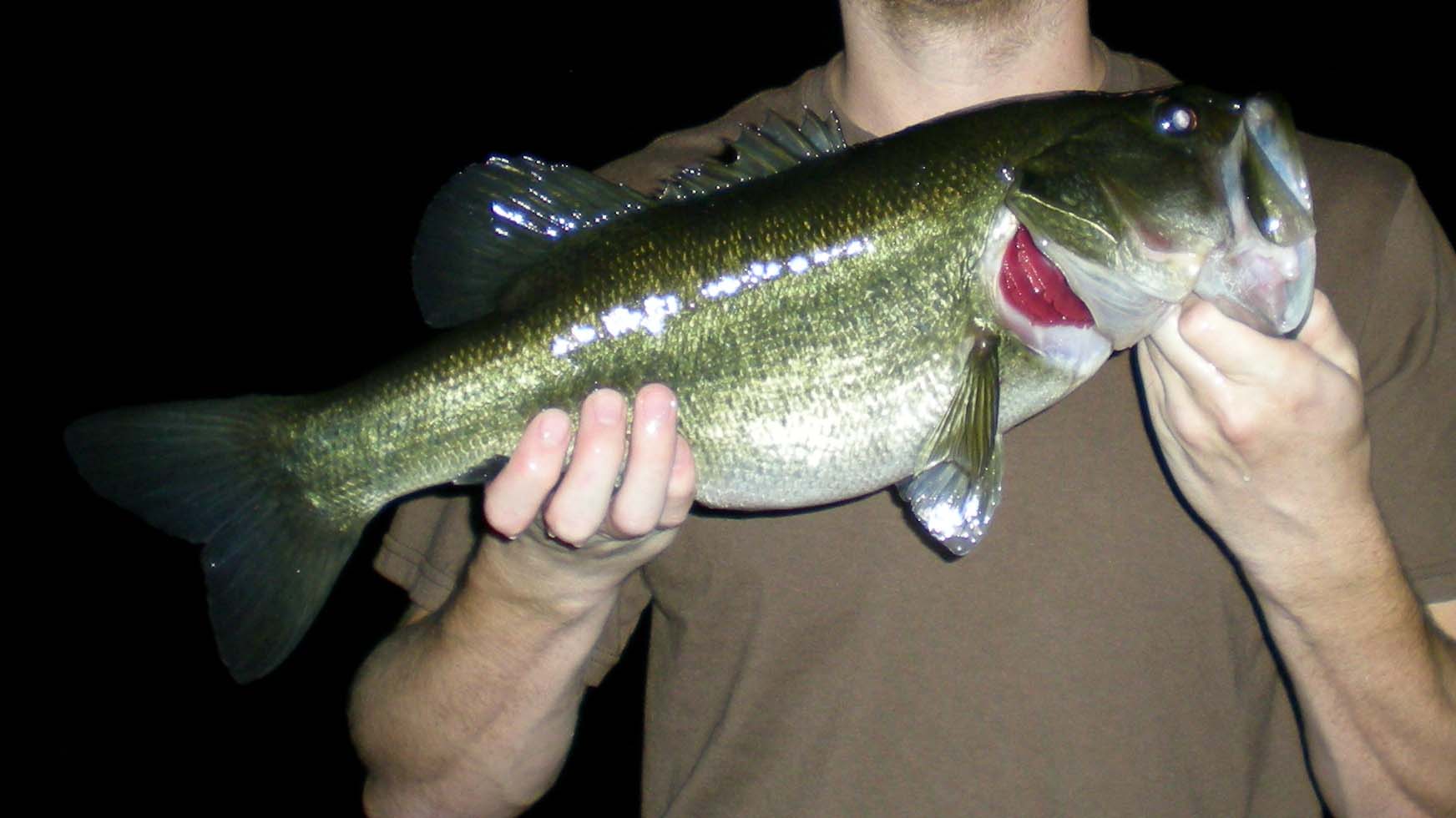
Largemouth bass without a doubt! The fins are separate, there are no spots on the stomach, and it's clear that huge mouth extends past then eye even with it open.
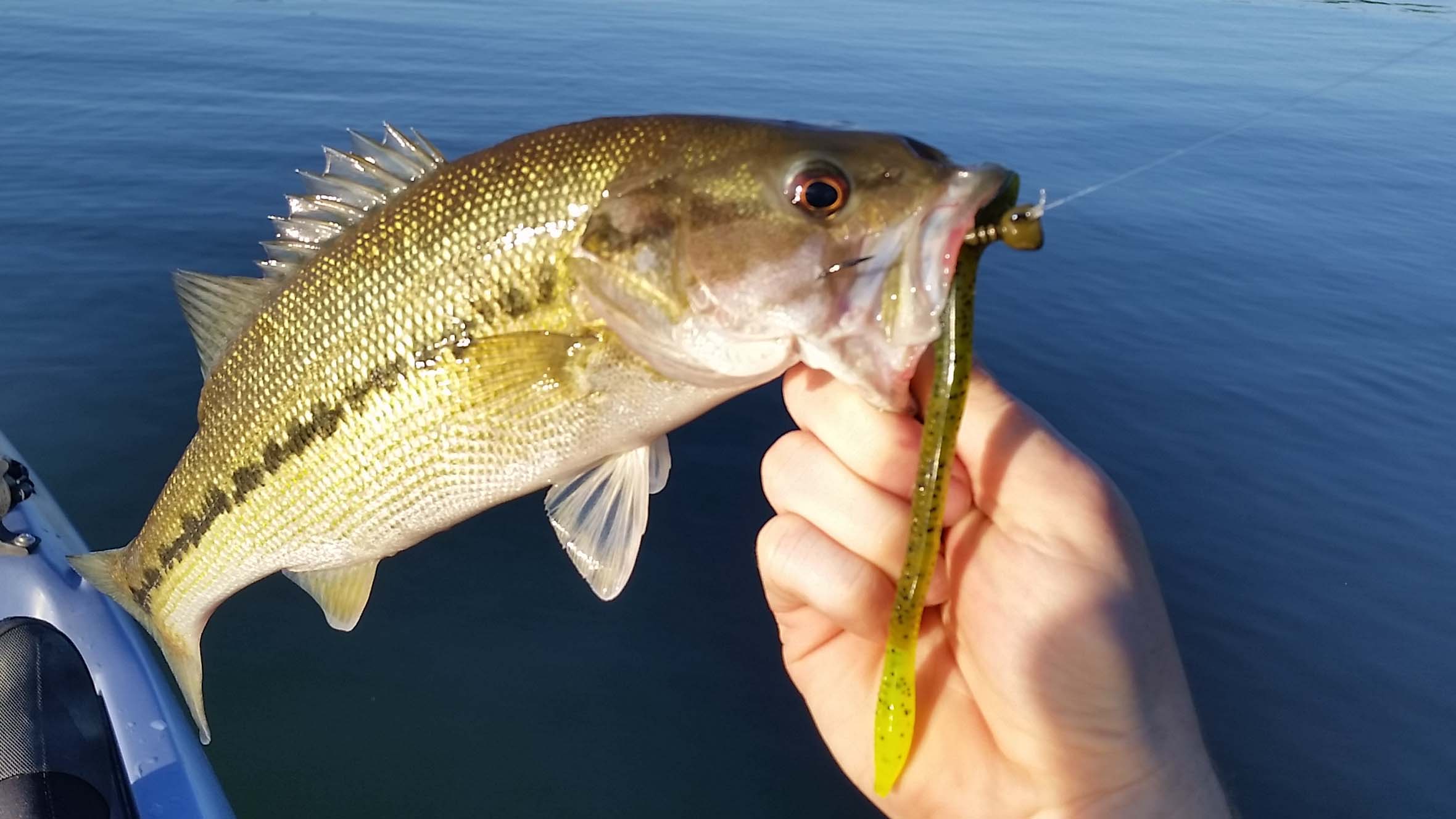
You can tell this is a spotted bass not so much from the fins or jaw since they are hard to see, but more from the spotted lines along the stomach.

Definitely a spotted bass because of the jaw corner ending before the eye, spots all over the stomach, and a clear connected dorsal fin.
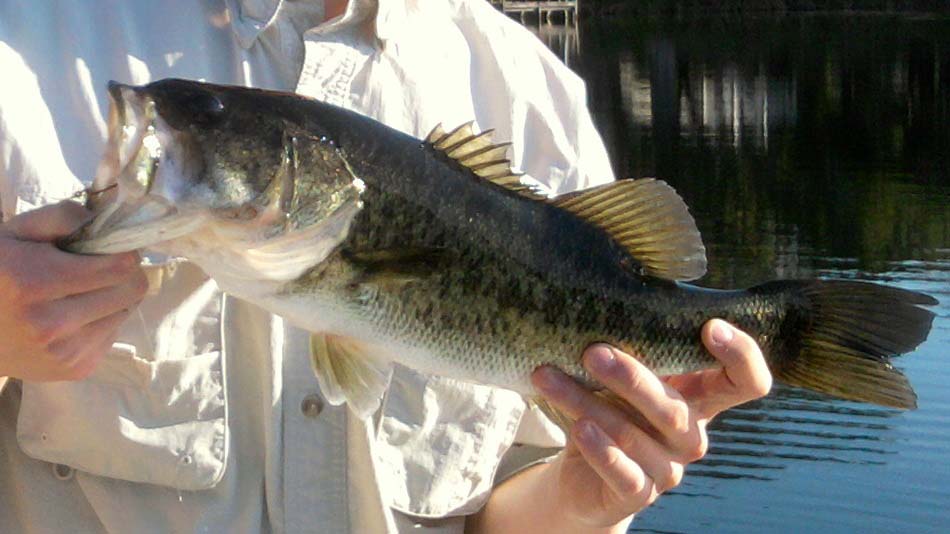
This one is a largemouth bass with great coloration. You can tell because the dorsal fins are not connected, the stomach is white without obvious lines of dots, and the cheek scales are the same size as the rest of the body scales.
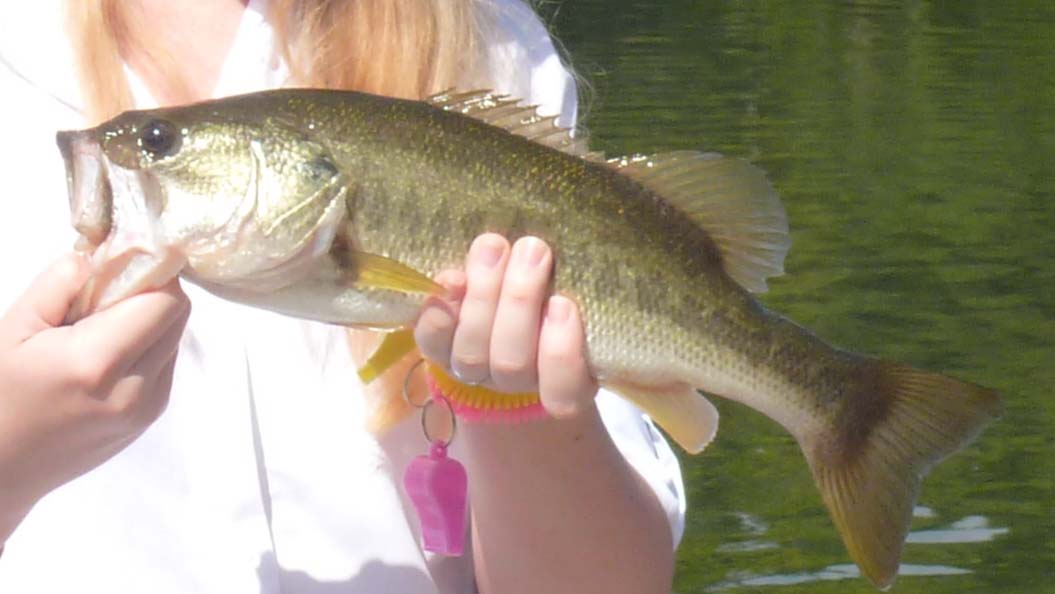
This is a tricky one because the mouth is open, the dorsal fins aren't all the way up, and the stomach is covered. However, you can tell it is a spotted bass because the stomach does have spotted lines and the cheek scales are smaller than the body scales.

All you need to know to tell that this one is a spot is to check the connected fins up top. Beautiful fish!

This last one is a largemouth. If the mouth were shut it would extend past the eye, and the top fins are not connected. Also the cheek scales are the same size as the body scales.
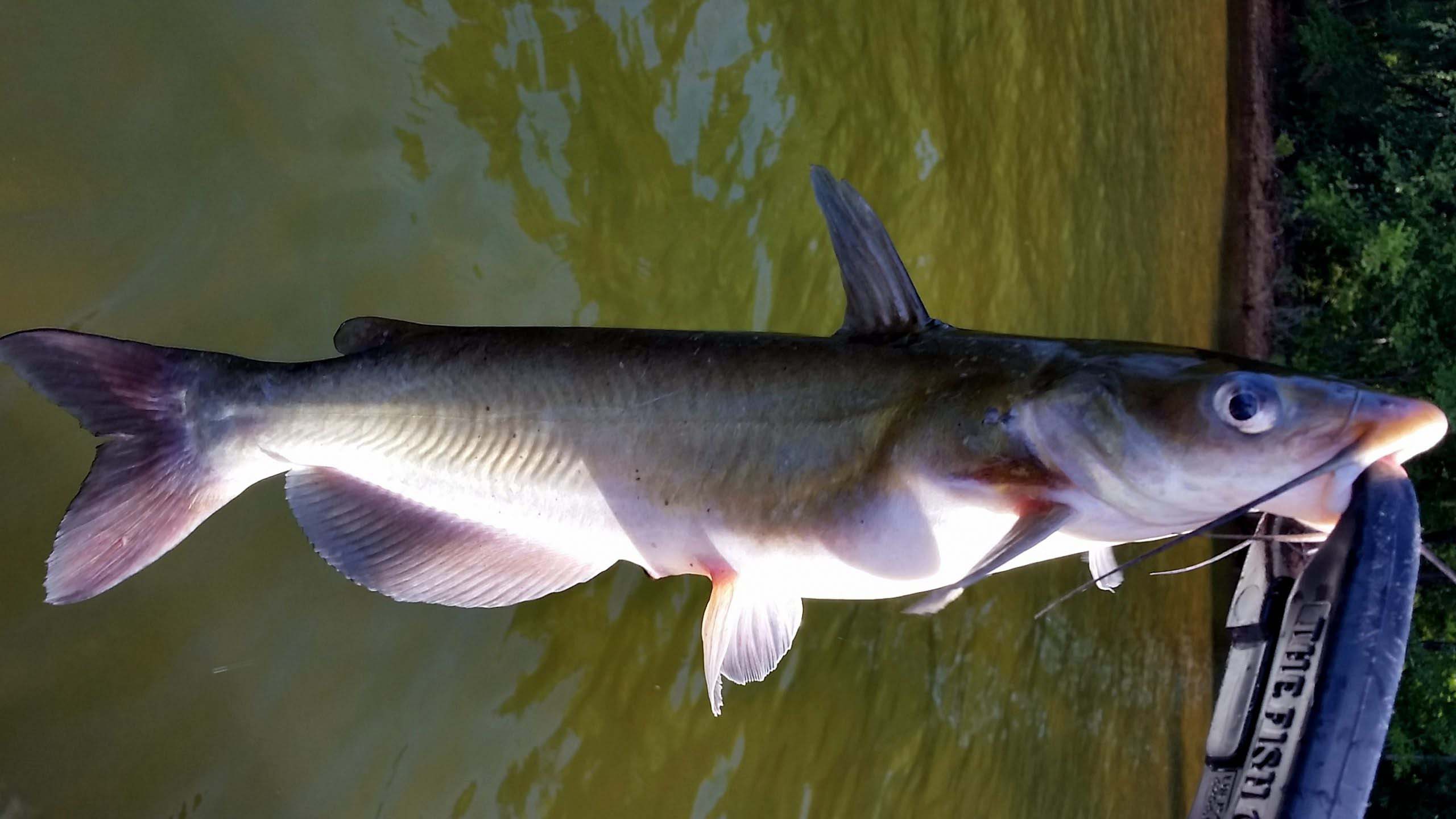
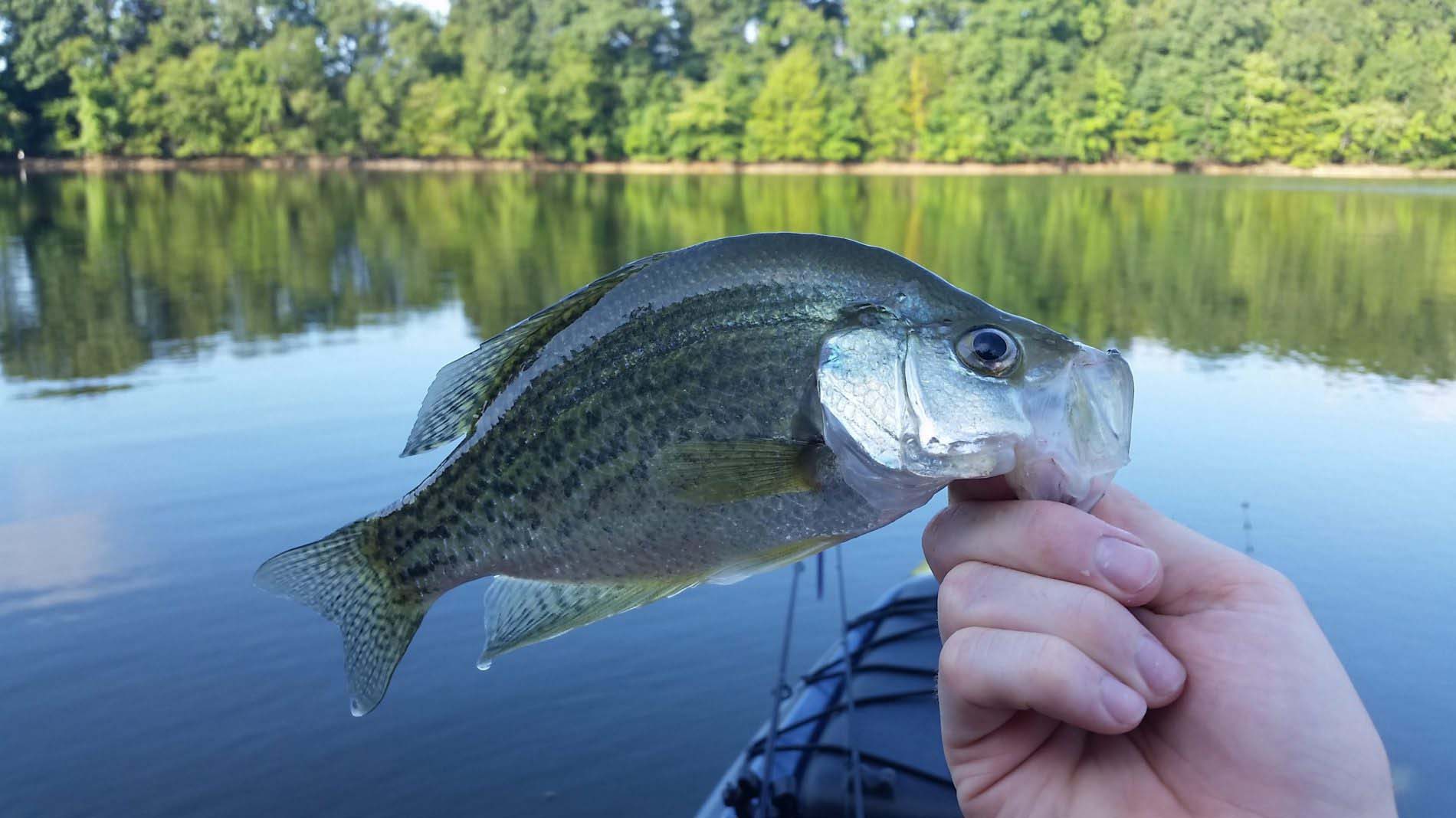
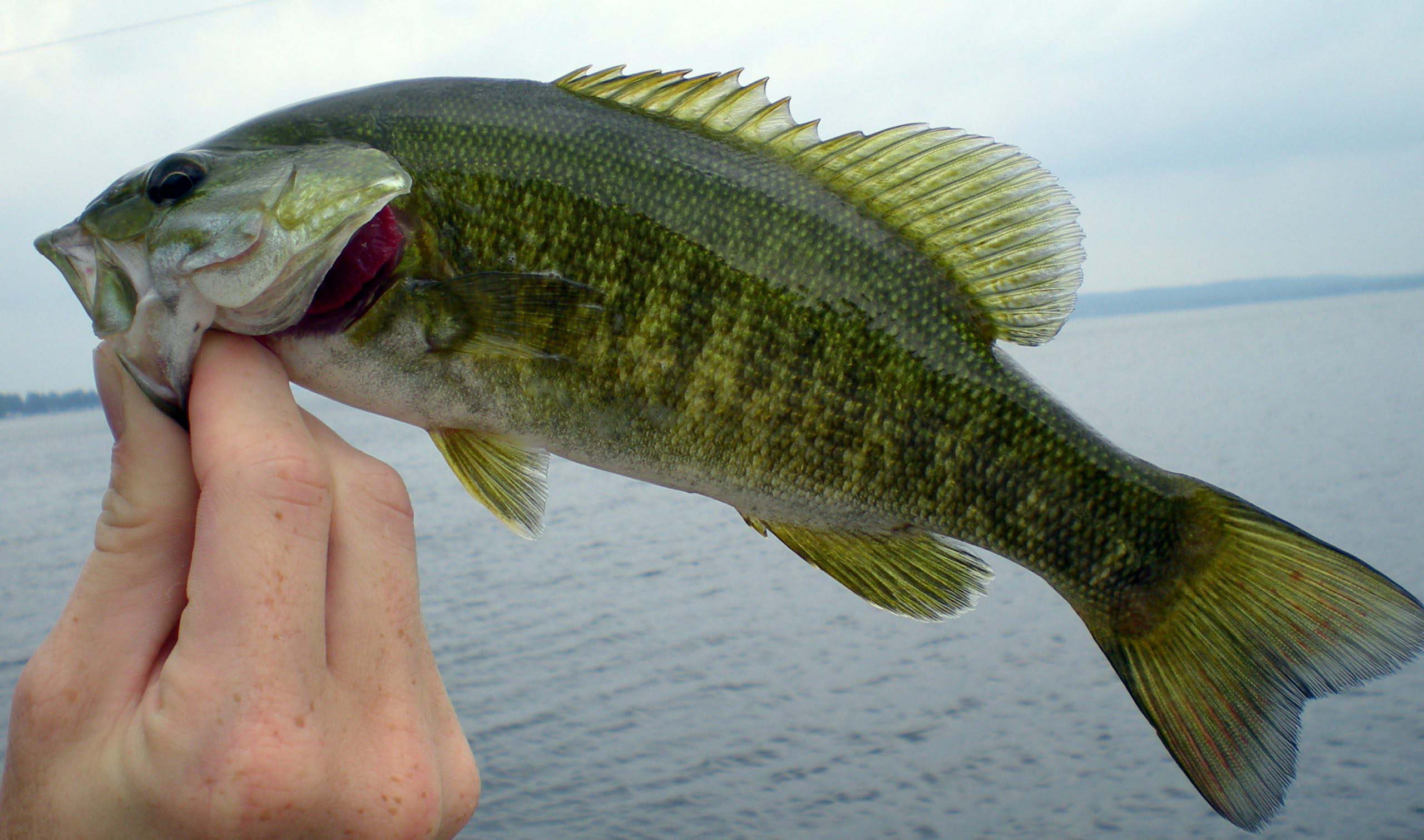
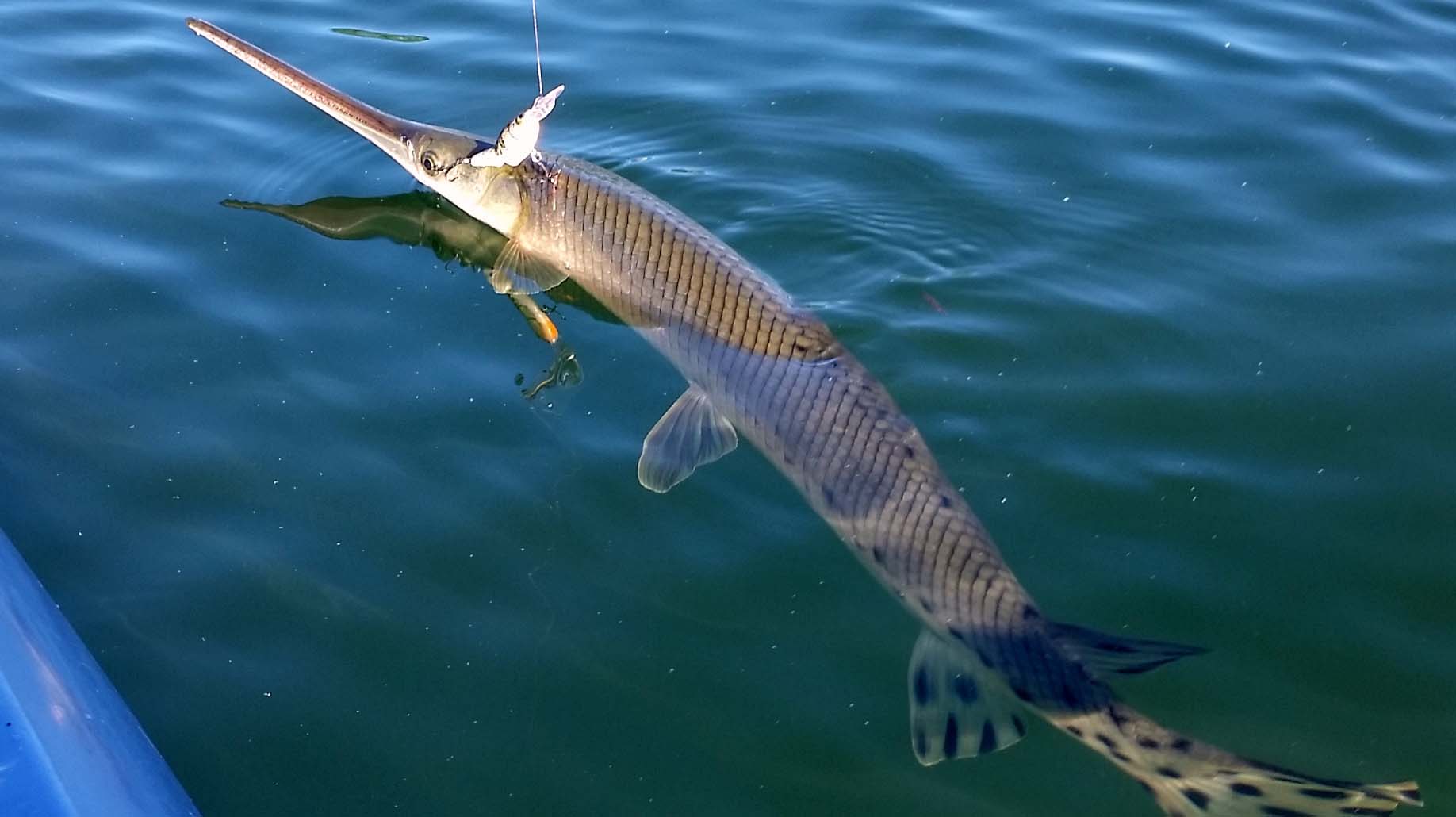

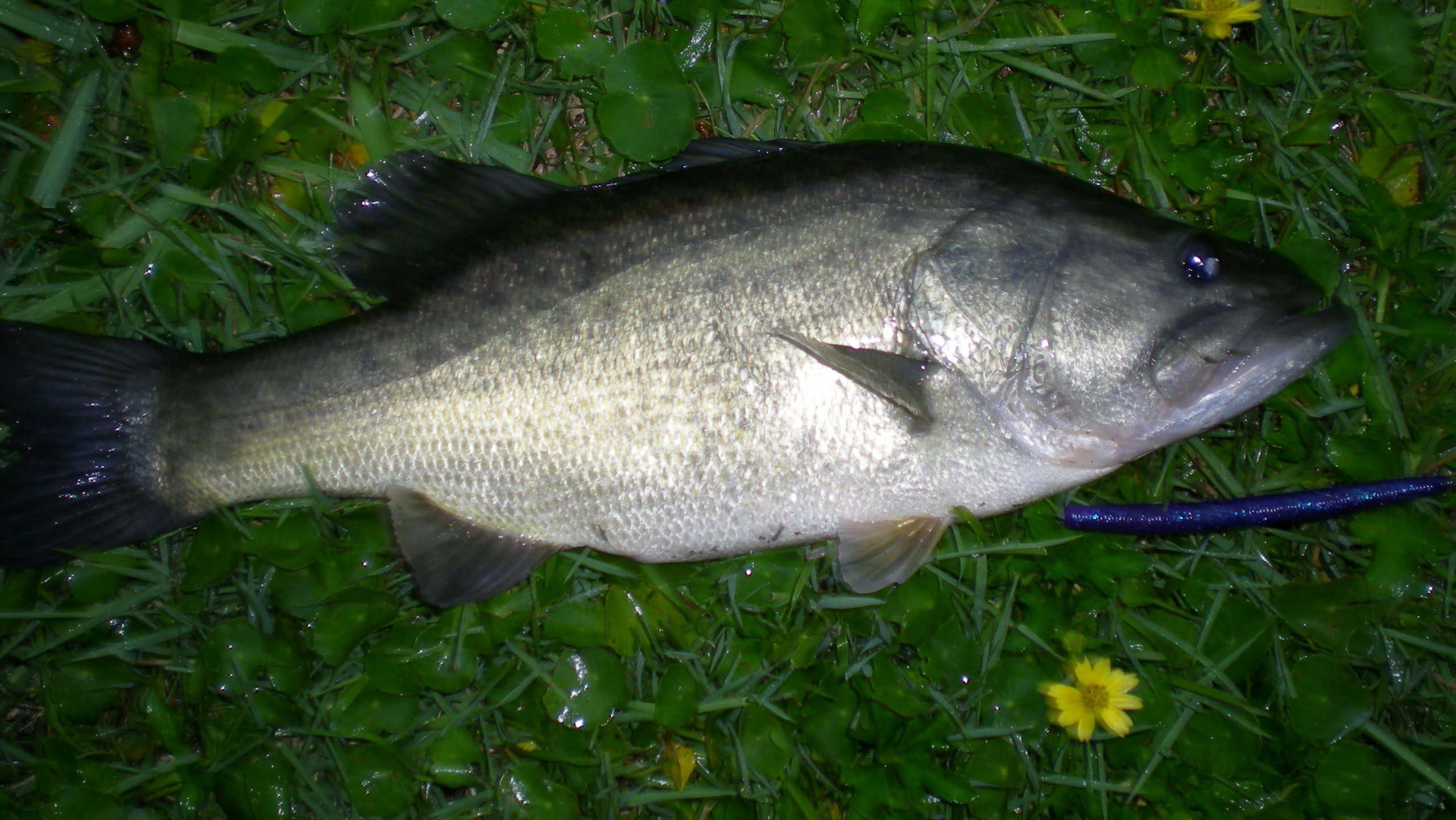
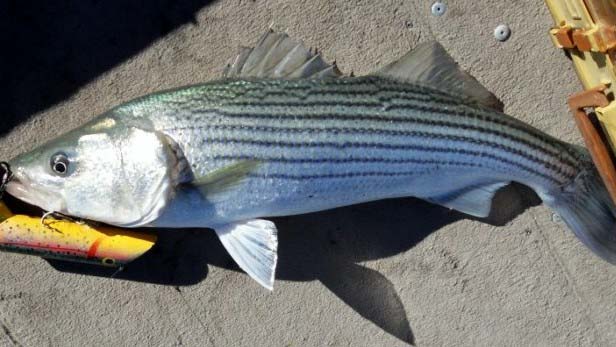
Heath Anderson
Heath lives in North Carolina and has been an avid fisherman and all around outdoorsman for the past three decades. In addition to enjoying the outdoors, Heath has been active in the online fishing industry since 2010, teaching and sharing reviews of fishing products on BassGrab.com to help anglers catch more and look good while doing it.
All stories by: Heath Anderson


